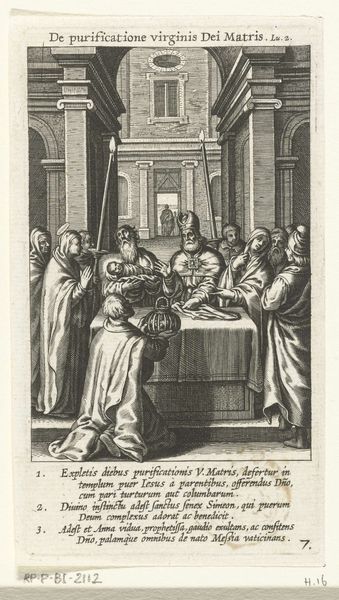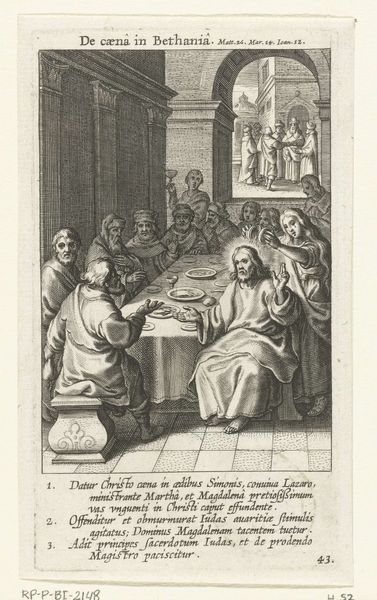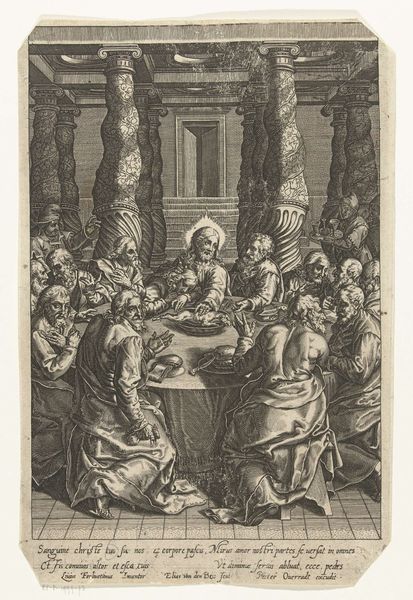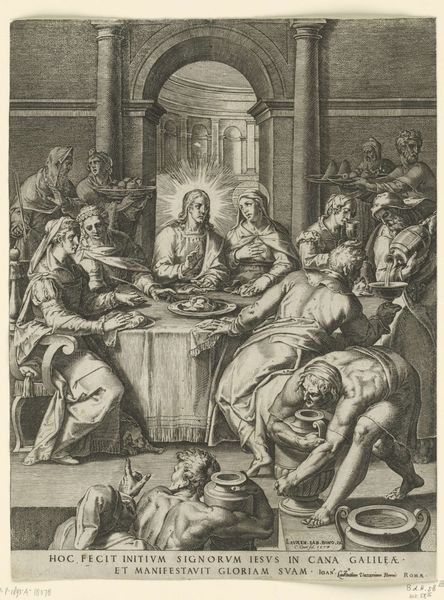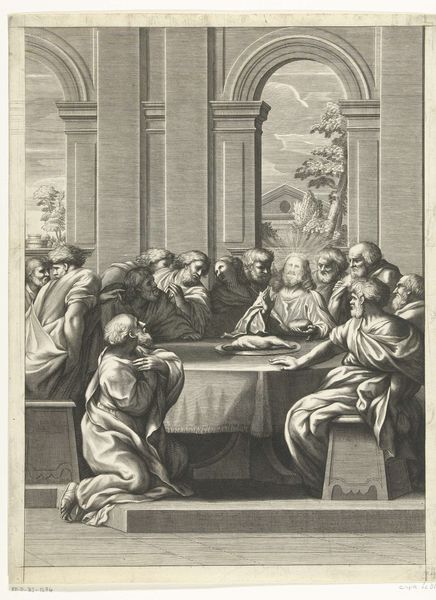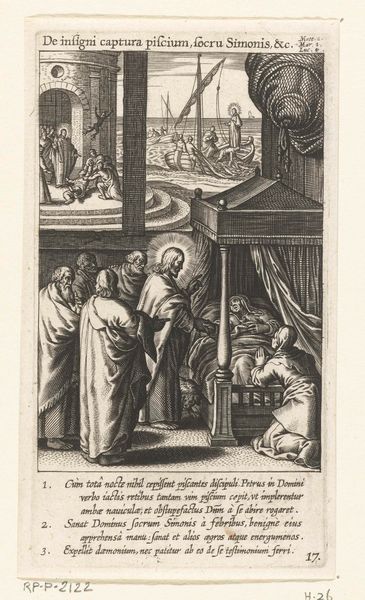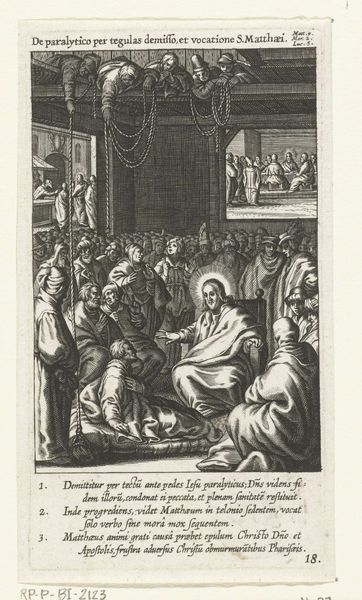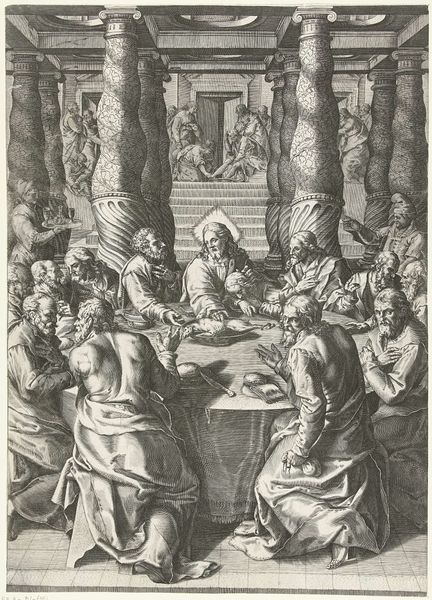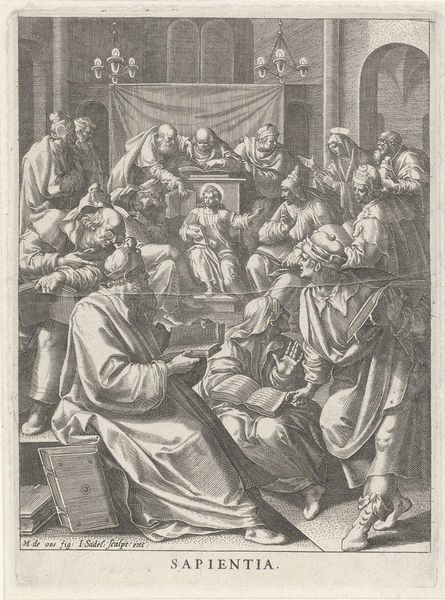
Vrouw droogt de voeten van Christus met haar haar tijdens maaltijd in huis van Simon de Farizeeër 1590 - 1622
0:00
0:00
boetiusadamszbolswert
Rijksmuseum
print, intaglio, engraving
#
baroque
# print
#
intaglio
#
old engraving style
#
history-painting
#
engraving
Dimensions: height 133 mm, width 74 mm
Copyright: Rijks Museum: Open Domain
Editor: This print, titled "Woman Drying Christ's Feet with Her Hair at a Meal in the House of Simon the Pharisee," created by Boëtius Adamsz. Bolswert sometime between 1590 and 1622, shows an interior scene in incredibly detailed engraving. I’m struck by how the artist manages to create so much depth with just line work, particularly how the central figure is foregrounded. What significance do you see in the gestures within the piece? Curator: This print is steeped in symbolism. Consider how Mary Magdalene’s act of washing Christ’s feet – literally cleansing them – resonates with ritual purification found across different cultures. Her tears, the ointment, her hair, they all speak to profound transformation. She uses that which might have been perceived as an object of vanity, her hair, for selfless service. Doesn’t this echo other visual tropes around repentance in art? Editor: It does make me think of other depictions of female saints and repentance, actually! Curator: Indeed. Notice too the figure elevated in the background contained inside what looks like a heavenly vortex. Here Bolswert has given us two versions of the same scene, or rather, two moments from the same story to symbolize its transformative power. The composition mirrors and reinforces themes of transgression and redemption. Editor: So it's almost like two planes of existence or perception shown together? How fascinating. Curator: Precisely. Look closely at the reactions of those seated at the table; can you discern different meanings in their facial expressions, each a commentary on the scene unfolding? Editor: I hadn't noticed before, but there's definitely a mix of shock, judgment, and even contemplation visible there. I suppose that suggests multiple possible responses to radical forgiveness? Curator: Exactly! This print functions as both a narrative and a moral guide, encapsulating potent symbols within a seemingly simple scene. Do you feel your initial impressions have changed after examining some of the underlying symbolism? Editor: Absolutely! What I thought was just an interesting composition now feels much more loaded with meaning and cultural context. Curator: It is precisely these layered meanings that continue to make such works captivating through the ages.
Comments
No comments
Be the first to comment and join the conversation on the ultimate creative platform.
